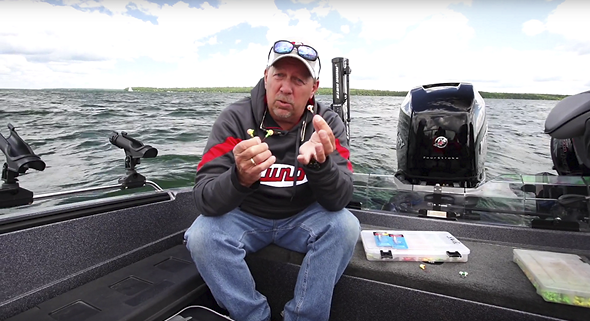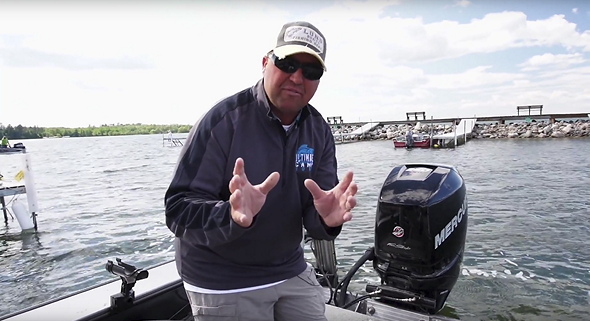Swimming Minnows: A Technique to Catch More Fish
Unleash your fishing potential with our expert guide on swimming minnows. Learn how to select the right bait and master this technique to boost your catch.

Why Swimming Minnows Are Taking Over: An Easy Guide to This Fishing Technique
If you’ve spent any time out on the water lately—or watching fishing videos online—you’ve probably heard about swimming minnows. It’s one of the most talked-about techniques right now, and for good reason. Thanks to forward-facing sonar and soft baits like The Freeloader™ from Crush City, anglers are not only catching more fish, they’re watching the bites happen in real time.
Let’s break down what the swimming minnow technique is, how to do it right, and why it’s working for more than just bass.
What Is a Swimming Minnow?
Swimming a minnow is pretty much what it sounds like. You rig a buoyant soft plastic bait—like The Freeloader—on a lightweight jig head and swim it slowly through the water. You’re not bouncing it off the bottom or twitching it hard. You're just steadily reeling it back, keeping it right in front of fish.
The big deal here is that with forward-facing sonar, you can actually see how fish are reacting to your bait. You’re not just guessing anymore. You can watch a fish follow, speed up, or bite. That’s part of what makes this technique so fun and addictive.
Gear That Gets the Job Done
To really make this technique work, you need the right setup. St. Croix actually designed a rod specifically for this: the Physix. It’s a medium-light, fast action rod, which means it’s sensitive enough to give your bait the right movement and soft enough not to rip it away from fish too quickly.
When it comes to jig heads, there are a couple of good options. The VMC Hybrid Swimbait Head and Sleek Jig both have longer hooks that help you hook more fish. If you want better sonar visibility and sensitivity, look into tungsten jig heads like the VMC Mooneye. They show up better on electronics and offer a little more weight in a compact size.
Not Just for Bass
This started as a bass technique, especially for smallmouth in open water. But it turns out a lot of species like a slow-swimming minnow. Walleye will eat it, pike will crush it, and even panfish sometimes take a swipe.
Each fish reacts a bit differently. Smallmouth bass tend to shoot up in the water column and hit the bait hard. Walleye are more methodical—they’ll follow it for a while before biting. With sonar, you’ll see how each fish type moves, and that can help you adjust your speed or presentation.
How to Fish It
The key to this technique is keeping the bait just above the fish. Too low and they might not notice it. Too high and they may not chase it. It’s about finding the sweet spot in the water column.
Here’s how to do it:
- Steady retrieve – Just reel at a slow, consistent pace.
- Watch your sonar – If the bait rises too high, slow your reel speed a bit.
- Keep the bait moving – Don’t stop reeling unless you need to make a small adjustment.
- Give it a pop if needed – If fish are following but not biting, a quick twitch or pop can trigger a reaction.
The Freeloader’s soft tail moves naturally, even with a light pull, and that subtle action often makes the difference.
Why It Works So Well
Swimming minnows check a lot of boxes:
- Easy to fish over weeds, rocks, and timber
- Clean presentation with fewer snags
- Works for multiple species
- Visual feedback from sonar makes adjustments easier
- Super effective when fish are suspended in the water column
And let’s be honest—there’s nothing like watching a fish follow your bait on screen and then slam it just under the boat.
FAQs
Do I need forward-facing sonar for this?
No, it helps, but the technique still works without it. You just won’t be able to watch fish reacting in real time.
What size jig head should I use?
Stick with something light—1/8 to 3/16 oz is a good starting point.
Do I have to use a Freeloader?
No, but the Freeloader works really well because of its buoyancy and tail action. Other soft plastics can work, too.
What kind of rod should I use?
A medium-light, fast action rod like the St. Croix Physix is ideal. It gives you control and helps with casting and hooksets.
A Fishing Technique Worth Trying
Swimming minnows might look simple, but they’re incredibly effective. With the right gear and a little practice, you can catch just about anything using this method. Whether you're after bass, walleye, or pike, this is one technique that's worth learning.
Try it out. Keep your bait above the fish. Watch what they do. And when that screen lights up and your rod bends? You’ll know exactly why this method has become so popular.
Want to meet the pro behind the insights?
Visit Tony Roach’s Pro Staff page to learn more about the expert behind the advice and watch a video of Tony in action.



